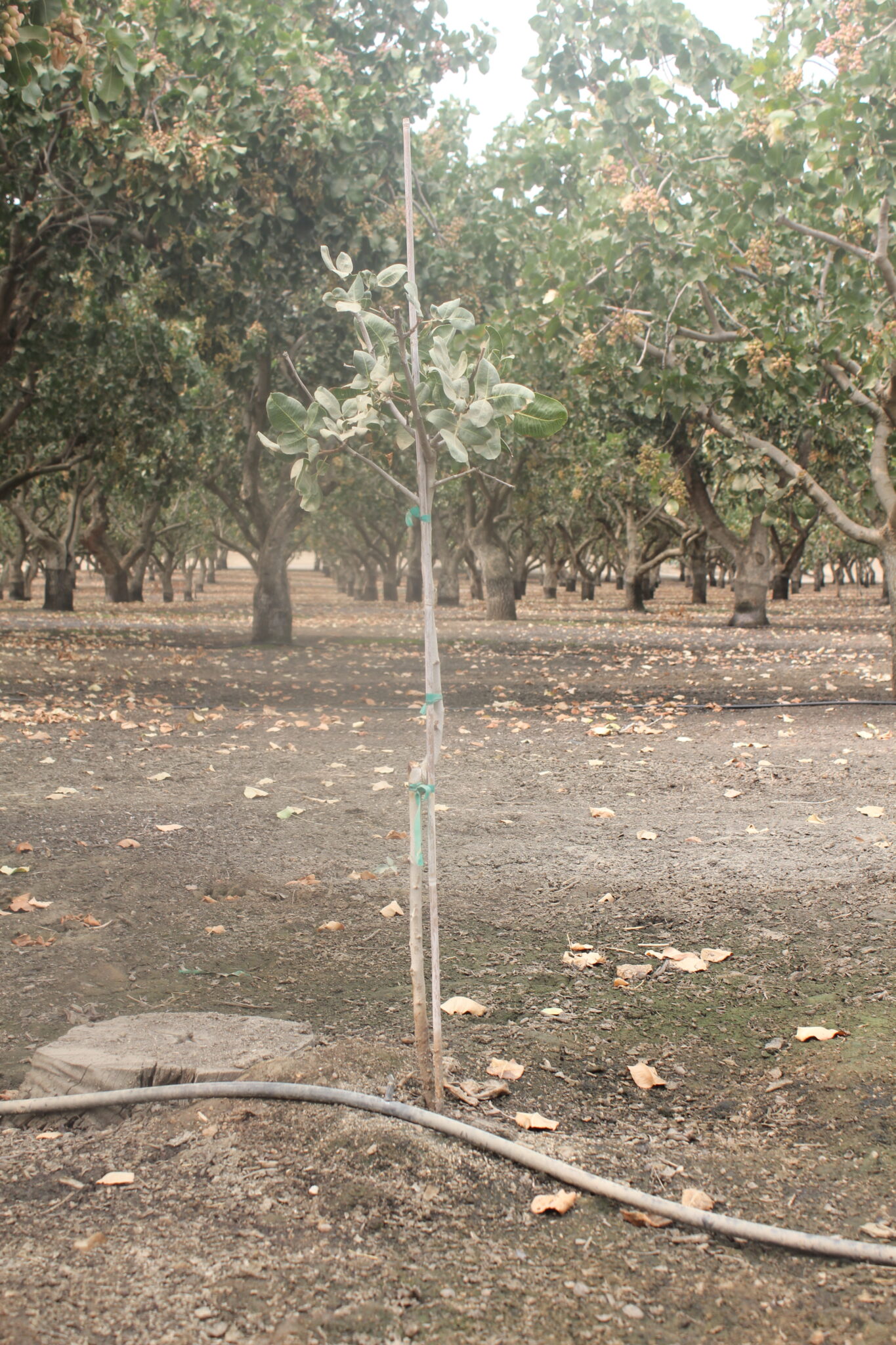
Given the production and long life span of a pistachio tree, it makes economic sense to fill in the space when a tree has died in a mature orchard.
The procedure for replacing individual trees in a mature pistachio orchard is not as simple as dropping a replant in the ground, said Cliff Beumel of Agromillora Nursery. To survive and be productive, new trees must have vigor to compete for light, water and nutrients.
The first consideration is the choice of budded or unbudded replants. Planting unbudded trees will require skilled labor at a later date but it may not be cost effective unless there are numerous replants. There is definitely more interest in sourcing budded trees for replants, Beumel. Those also come with a warning that growers should understand budded trees may have been growing in containers for a couple years and the root systems could be compromised. It will take time for those trees to begin growing after planting in the orchard, he said. Newer style containers can prevent root circling in containers and yield a more viable tree for replanting.
Growers should also do some research on rootstock selection. Rootstocks contribute to the vigor of the tree, Beumel said. Research is also being conducted on rootstock resistance or tolerance to soil borne diseases.
Preparing the site for the replant is important. After removal of the dead tree, digging out as much root material as possible is advised. Spot fumigation should be considered if there is evidence of nematode infestation. After digging out the replant site, Beumel said that the hole should be completely back filled and ample time allowed for the soil to settle. Depending on the soil type, a long fallow period is advised to allow winter rains to settle the soil. If the trees are on a berm, it should be rebuilt at the site.
Keeping single replants alive can also be time consuming. Over or under irrigation is likely with new trees unless adjustments are made in the water delivery. The new trees need much less water than the surrounding mature trees, but it is also important to make sure the receive sufficient water to reach the root ball.
Soil type can affect how trees are irrigated. Sandy soils, Beumel said, make it easier to avoid overwatering as the ground won’t become saturated. Heavier soils prove the most difficult with standing water around the tree.
















